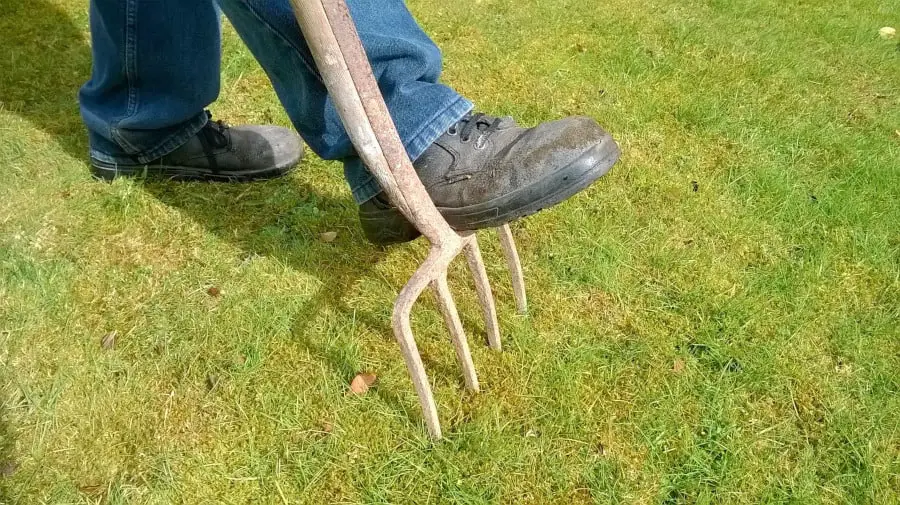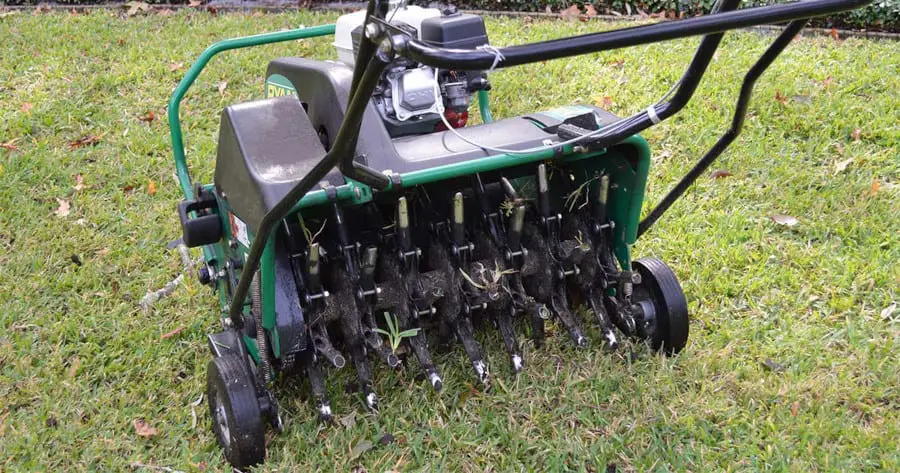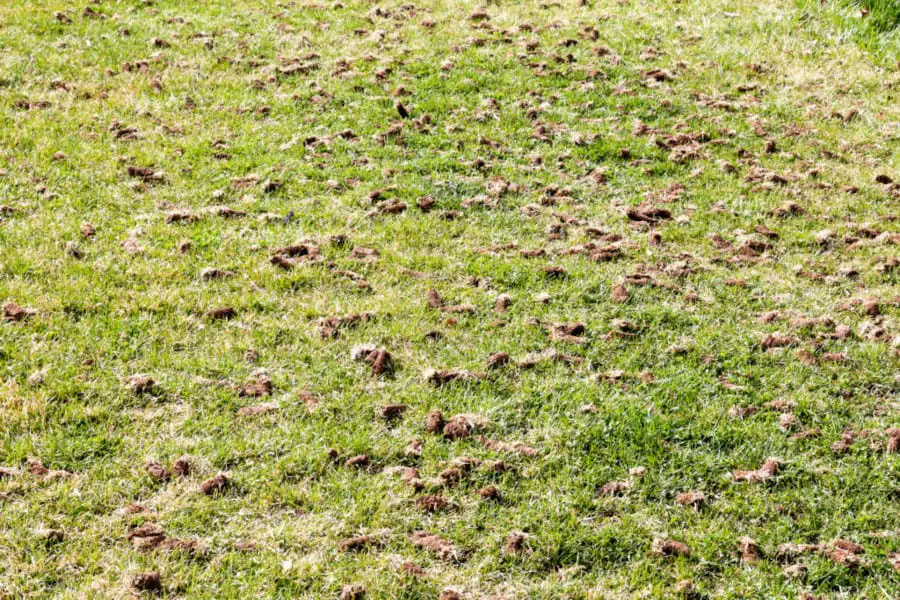Are you worried about the health of your lawn? Does the grass look pale and is filled with dead organic material? If you responded in the affirmative to any of these questions, you have come to the right place.
The way forward to healthier grass is dethatching and aerating your lawn. These procedures help in combating the damaging material lying in the grass and ensure healthier growth.
Aeration vs. Dethatching the Lawn
Even though both processes improve lawn health, they have different functions. Dethatching helps in removing the upper dead layer of the ground and allows it to breathe. On the other hand, aeration digs holes in the ground, treats compact soil, and loosens the roots. On the whole, dethatching is more destructive than aeration.
What Is Lawn Aeration?
Aeration is the procedure of perforating your garden soil with tiny holes by either forking your lawn or removing small plugs of thatch. The choice of process depends on the tools being used, be it a plug aerator or spike aerator. The main reason for this procedure is to ease soil compaction and improve the circulation of water, air, and nutrients in your soil.
Grass in a lawn can get compacted over time in response to being frequently walked over, or as a result of the damage caused by heavy rains. When organic debris and thatch accumulate on the soil, the transmission of nutrients becomes impossible. Due to this, grassroots do not get essential elements for growth and cannot thrive.
Aeration is usually done as part of a lawn care package offered by professional gardeners and gardening services. However, if you wish to do it yourself or just educate yourself on the matter, read on ahead as we discuss the process in detail.
When Do I Need Aerating My Lawn?
Most residential gardens benefit tremendously from yearly aeration. However, how frequently your lawn requires aeration depends entirely on soil compaction in the lawn. For example, golf fairways tend to require aeration at least five times a year due to the high footfall they experience. You must determine whether your lawn gets compacted due to heavy rains or by being walked over, since this will help decide how often aeration is needed.
The most popular seasons to aerate your lawn are autumn and spring. This seasonal aeration provides your garden with an extra boost through the cold and hot seasons and will help in strengthening the entire root system. The ideal time to aerate your lawn is during the growing season when the grass can recover quickly and take over the open areas that develop as a result of aeration.
- If you are convinced that your garden requires aeration, then there are a few tips you need to follow.
- Ensure that the soil is very moist; you must water it thoroughly or, for better results, carry aeration after heavy rain.
- Pass the compacted areas of your lawn several times because most aeration machines only cover a small area of the soil surface.
- Dry the excavated plugs or break them up to provide your lawn with a neater look. These plugs also deposit a light coating on the top, which helps in decomposing thatch.
- After aeration, you can proceed with healthy lawn activities like watering, fertilizing, and mowing.

Advantages of Aerating the Lawn
Lawn aeration is a highly beneficial treatment for your lawn. Some prominent benefits include:
Better Health
Strengthening the root zone and providing it with better access to water, air, and fertilizer ensures your grass gets its daily nutrients. It allows your turf to grow and be healthier while allowing grassroots to stretch and become denser with soil aeration.
Reduces Compaction in Soil
Aeration helps reduce the soil’s density and enhances the air exchange between the atmosphere and the soil. If the soil is very compact, it can deprive your lawn’s roots of air circulation. However, aeration helps in unclogging compacted soil, which reduces thinning, dead spots, and patches caused due to root suffocation.
Reduction of Runoff or Puddling
When you loosen the soil through aeration, your lawn absorbs water easily. If your lawn has spots that gather puddles during storms or has runoff, then soil aeration will fix these issues.
Reducing Thatch
Thatch is a very thin layer of decomposing organic matter on the surface of your lawn. While this is very beneficial to your lawn, too much of it can be unhealthy. Thatch that is no more than ½-inch thick is good for the garden; let the thatch grow any thicker than that, and it will prevent water, air, and nutrients from entering the roots. Aeration helps in breaking extra thatch build-up.
Prepares Lawn For The Future
Aeration in the fall allows your lawn to survive the dormancy of winter. With overseeding and aeration, you can improve your lawn’s ability to resist diseases and insects.
Disadvantages of Aerating the Lawn
Just like with every procedure, aeration has its disadvantages, too. Some drawbacks of this procedure include the following:
Costly
Aeration can be incredibly costly, even for a small garden. If you are taking professional help, you should be prepared to spend money on your lawn. However, to reduce the cost, you can get an aeration tool and perform the procedure yourself.
Backbreaking Activity
If you are saving money and carrying it out yourself, you need to be prepared to have your back aching. This procedure is very tiresome and requires a lot of hard work to get the best result. Make sure you are ready for such a commitment when carrying this activity. To make the task somewhat less tiring, consider spreading it over the course of a few days.
What is Lawn Dethatching?
Thatch is a layer of dead leaves, roots, grass, and rhizomes that collect between the grass blades and the soil surface. Over time, this thatch grows thicker and thicker, until it eventually stops air and water from reaching the depths of the soil beneath the thatch. Even though a small amount of thatch is beneficial for your yard, we have just established that too much of it is certainly a problem. Dethatching helps in removing some of the accumulated thatch to promote better lawn health.
What is Thatch, and When Do I Need Dethatching?
Thatch is a dead plant tissue that is accumulated from the previous growth of the turf, and is usually brown or yellow. A thin layer of thatch is healthy for the soil, but it can create issues if it continues to accumulate over a long time. Thatch creates a dense mat over your lawn, and as a result, your grass receives very little water and weak air circulation.
Soon, this wet mat becomes a haven for insects and fungus, and over time, it ruins the entire grassy area. It is a good idea to carry out dethatching once a year to get healthy grass growth and make your lawn look green and clean.

A lawn dethatcher is used to carry out dethatching. It is a machine for gardening that helps in removing dead plants, weeds, and vegetation. It comes with blades that can cut and remove thatch easily. This process can even be carried out by hand, but using a gas-powered dethatcher makes it a more efficient, faster, and effective procedure. Before you go ahead and start dethatching your garden, you need to follow a few tips for a more efficient result.
- You should mow the lawn to half of the standard height before you start dethatching.
- Smaller gardens can be detached using a dethatcher rake. While using this rake, make sure you feel and see the thatch separate itself from the soil.
- If you are using a dethatcher, mark sprinkler heads, irrigation lines, or any buried utility connections before you start.
- When you rent a detacher, ask the rental agency to set the cutting and spacing depth according to your lawn’s reqquirements so that it is done perfectly.
- After detaching, fertilize your lawn and keep it appropriately watered for a quicker recovery.
Advantages of Dethatching the Lawn
Dethatching has a couple of advantages, making it an excellent procedure for dead lawns and gardens. These benefits include:
Provides Lawn with Sufficient Nutrients
As explained above, thatch is a layer of dead grass that is detrimental to the health of the grass. Dethatching allows you to get rid of this layer and opens up your garden to fully absorb nutrients. These nutrients ensure efficient lawn growth and help in maintaining its beauty.
Allows Air and Water to Get In The Soil
For proper lawn growth, the lawn must have proper access to adequate water and air. Thatch prevents these elements from reaching the deeper ends of the roots, thereby limiting the growth of grass. In more serious cases of neglect, thatch can even kill the lawn.
Dethatching allows your grass to get a greener appearance and receive adequate amounts of water and air for healthy growth. Also, without dethatching, the fertilizer will not reach the soil and serve its function. In contrast, this procedure allows fertilizer to reach all the areas of the soil and spread itself uniformly. This will significantly improve the health of your garden.
Improves Soil Health
We have established that dethatching will allow essential nutrients to reach the soil and allow the grass to grow in a healthy manner. It will remove unwanted materials and provide your grass access to direct water, sunlight, air, making it healthy and beautiful.
Disadvantages of Dethatching the Lawn
Just like with aeration, dethatching comes with some drawbacks as well. These include:
It is Labor Intensive
If you have a small garden, dethatching will not be as labor-intensive as it will be in a larger garden. Make sure you are ready to work hard on your garden and prioritize it when you start because you won’t be able to leave it in between, since doing so will make your garden look worse.

It Stresses Out The Lawn
If you perform dethatching at the wrong time of the year when the grass is dormant or growing slowly, you can risk damaging your entire lawn. Apart from taking into account the growth period of the grass, you also have to make sure that the soil is neither too dry nor too wet when you carry out a dethatching session. Otherwise, you can kill the lawn and will have to fix it from scratch.
It Can Remove Healthy Thatch
As mentioned previously, thatch that is less than ½-inch in height is healthy and helps your lawn thrive. This mulch helps in keeping your grass shaded, so it doesn’t need much water. It also ensures that worms and beneficial microbes breakdown the thatch into nutrients to benefit your grass. If you cut this healthy layer of thatch, you can hinder the growth of your lawn.
How to Determine if I Need Dethatching or Aeration?
If you cannot figure out whether you need to aerate or dethatch, then don’t worry. Here are some pointers that can help you decide which process is more suited to your lawn.
- If your thatch is less than ½-inch deep, you can aerate your lawn.
- If the thatch is thicker and more than ½-inch in height, it is a good idea to dethatch your lawn to make it more healthy.
- If your land is spongy and bouncy, then this is a sign to get it dethatched.
- If your grass is not turning green even after fertilizing, then you must aerate your lawn at least once or twice a year.
Conclusion
Dethatching and aerating are two very suitable techniques designed to keep your lawn healthy. They both have their advantages and disadvantages and finding the technique that your garden needs will make it look healthier and greener over time. However, keep in mind that thatching requires more labor as compared to aerating, so, make sure you have the help you need when you decide on dethatching. Similarly, the choice of tools have a significant impact on aeration, so pick the right tools before you begin the process.


